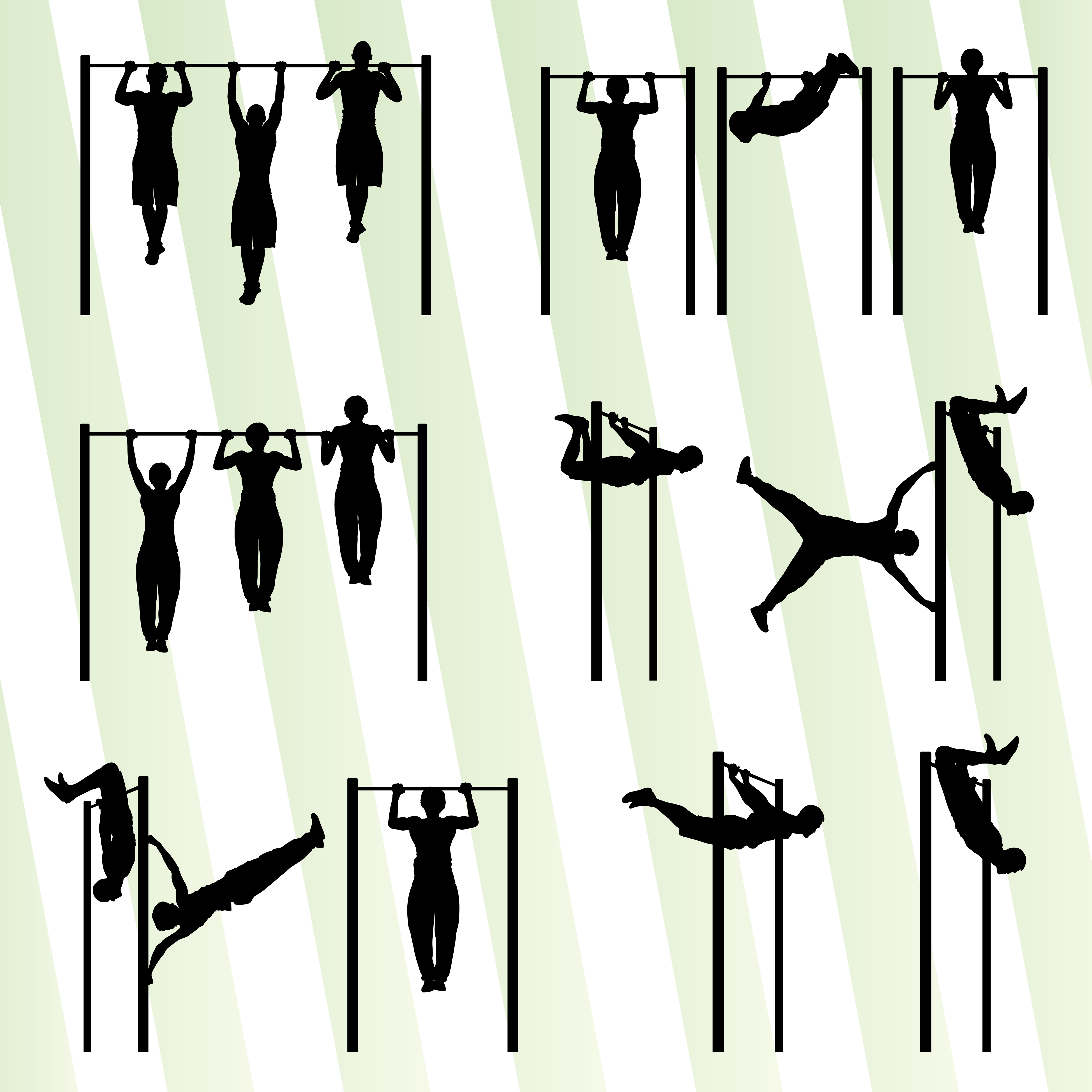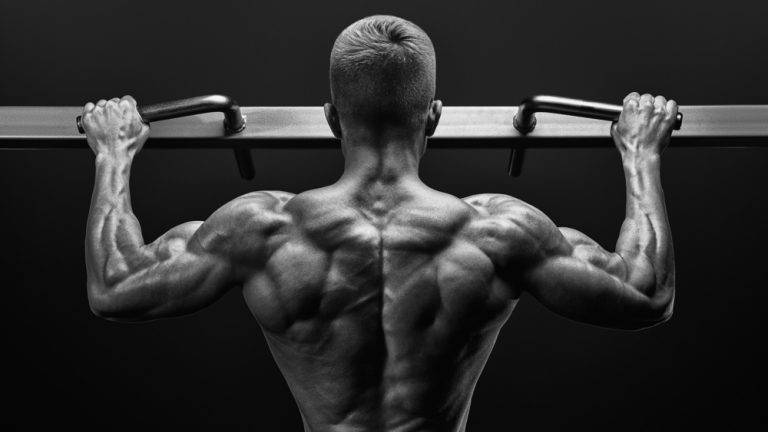Pull-ups are one of the most comprehensive exercises involving the upper muscles. Many people forget about this exercise or don’t do it because it seems too difficult. That's a mistake! Just look at the bodies of gymnasts or calisthenics to realize that pull-ups should be present in our training schedule. Pull-ups are one of the oldest and most popular multi-tasking exercises.
Types of pull-ups
There are several types of pull-ups depending on the grip used and the width of the shoulder width.
- Neutral grip
- So called chin-ups (wide and narrow)
- Wide or Narrow Grip Pull Up
Types of pull-ups are listed in order of progression.
You can do pull-ups not only using a bar, but also ropes or gym wheels. It’s important to put an assortment of different types of grip in your plan, which will in a slightly different way involve the work of the muscles, allowing you to put more work into them.
What kind of muscles are involved in pull-ups?
The upper extremity muscles of the broader spine and the enlarged muscles of the upper abdomen. Muscles that are less involved: subcutaneous, sphincter, long triceps head, and short biceps head, which participate in adducting the shoulder.
Depending on what kind of grip we use, we will build different parts of the muscles differently. The wider the grip, the greater the involvement of the uppermost muscles of the broadest back. On the other hand, while doing pull-ups, we also engage biceps muscle more.
What do pull-ups give?
Pull-ups are a very versatile exercise, involving both the back muscles and the shoulders. It affects overall fitness and strength. It is the most important exercise for upper muscle groups.
The work done in pull-ups and the resulting effects are incomparably greater than those achieved by exercises performed on machines or performing exercises isolating the individual upper muscle parts. We have a lot of muscle involved in pull-ups. The more muscles you work on during the exercise, the more work you do. You burn more calories, give your body more intense stimulation to develop. It is precisely on complex multi-joint exercises that you should base your training.
How to start pull-ups?
Certainly, pull-ups are not an easy exercise. In the beginning for many people, especially women, and overweight people, even one repetition will be a problem. However, do not be offended and give up. Surely it’s worth spending a lot of patience and set that work on the pull-ups will not last a month, and often much longer. If you can’t pull up - do not give up and do not go to the pulling machine. Doing this exercise will not bring you closer to doing full pull-ups. There are helpful exercises that can help us with pull-ups.
Exercise to progress in pull-ups:
Inverted rows
This exercise is like a reverse rowing. We do pull-ups with the body set horizontally to the bar. A slightly easier version - for beginners - with legs bent in the knees. The higher the bar, and the more vertical we are be to the bar, the easier the exercise.
Hanging on the bar
Hanging on the bar is a great exercise that will prepare our grip and forearms accordingly. It’s important to exercise this properly. We do not hang on the bar with loosely laid barges. We try to tighten the shoulder blades, lock them, and tighten the belly. Begin with a series of 3 to 15 seconds while retaining the right form of exercise.
Hollow rocks
This exercise is designed to teach us how to maintain a tense body. It activates mainly the muscles of the body, which are also necessary during pull-ups exercise. Raising knees while hanging on the bar. This exercise mainly involves the abdominal muscles. However, it will also be a great way to strengthen the forearms, which will greatly translate into the ability to do pull-ups.
Lowering on the bar
This is one of the exercises that will best prepare you for the main exercise. It is very important to do this exercise in a controlled manner. The movement should take 3 to 7 seconds. In addition, we can add 2-5seconds pause in motion phase, which causes us the biggest problems.
Pull-ups with the help of a partner
One of the better ways to learn pull-ups is to do exercises with a partner. It helps us move in the concentric phase. With the help of a partner we are able to perform full-range pull-ups. The advantage of this exercise is that we get help where we need it and how much we need it. The disadvantage may be that the help each time may be slightly different.
Pull-up with a leap
Jumping pull-ups. This exercise allows you to strengthen the nerve impulses in the muscles necessary to make the pull-ups. Jumping provides help and makes moving up easier. This exercise teaches you to work in the appropriate range of motion using the force of the legs.

What to do to get better at pull-ups?
To pull up more and better you have to do pull-ups, preferably a lot and in different ways. The best way to do this is to do this 3-5 times a week. In general, the more and more often we do it, the better. The good thing is to do a few pull-ups several times a day. From the point of view of improving the quality of our exercise, it will be better to pull-up 5 per day than to do it once a week for 5 series of 5 repetitions.
We should always care more about the quality of our exercise, and not necessarily about their quantity. It’s better to make 3 pulls in full range of movement, than 6 without straightening our elbows properly. In most cases, we should not be getting close to the maximum number of repetitions we can make and working 50-60%, ending the series before muscle breakdown. So if our current max is 10 pull-ups, work on 5-6 repetitions in the series and, for example, make more repetitions in the series only once a week, approaching your max.
Pull-ups - Summary
In conclusion, mastering the pull-ups requires a lot of work and patience. However, it is important to work on this exercise because it will help to strengthen and build the upper body as no other exercise.







One Comment